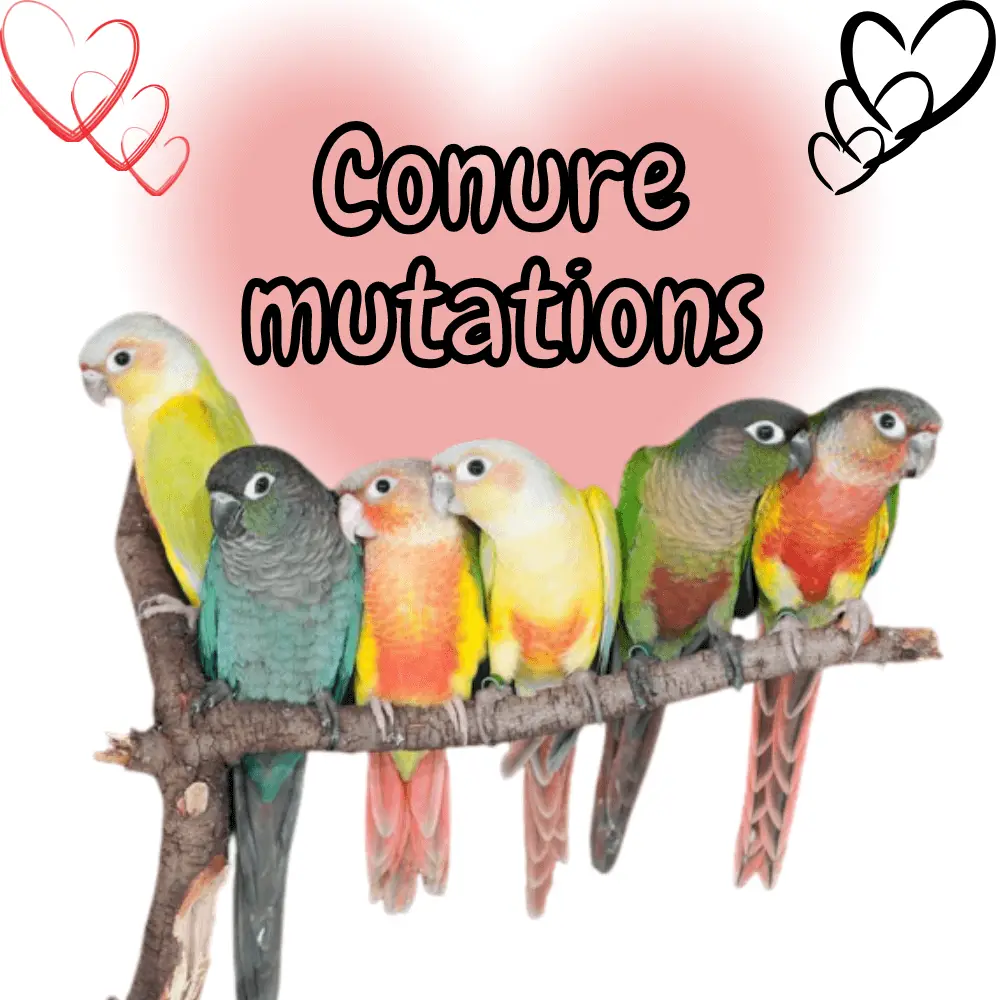Conure mutation: Lutino mutation in the conure pyrrhura molinae Benjamin Canou returns once again to our site to share with us his feedback on the lutino mutation in the conure pyrrhura molinae.
Lutino mutation in the pyrrhura conure
 bird conure types
bird conure types
A little history…
The lutino mutation appeared in 2010 or 2011 in a Belgian breeder who has unfortunately died since.
In February 2017, this change arrived in France at home. And in May of the same year, I had my first young lutino.
As many have thought, the lutino mutation is not related to sex but is recessive. The first lutino to appear was a male.
Effect on Plumage
The effect on the plumage is as follows:
- Green turns yellow, blue flight feathers turn white.
- The black head turns white.
- Legs, nails, and beaks turn white/ivory.
- The tail is bright red.
- The red of the belly remains red and its intensity can be worked on especially by
- combining it with opaline (unlike pansies, lutino combined with opaline does not give Rubino).
Personally, I work both ways, have a lot of red and try to remove it

The combinations to obtain the lutino mutation
Because the lutino is recessive, here are the couplings to get it:
1.Ino carrier x ino carrier
As a youngster, 25% non-carrier, 50% ino carrier and 25% lutino.
2.Lutino x non-carrier or non-carrier x lutino
Will give in young 100% of ino carrier.
3.Lutino x ino carrier or ino x lutino carrier
Young 50% ino wearer and 50% lutino.
You should know that there is nothing that can identify an ino carrier of a non-carrier in the case of the first couple. This means that all the young people who will not come out of lutino, they will be carrying ino as possible.
Read also:
- Green Cheek Conure Ability To Talk
- How to recognize a male from a female Conure
- Training teaching green cheek conure tricks
- Green cheek conure eggs
- Training teaching green cheek conure tricks
- Reproduction of conure

